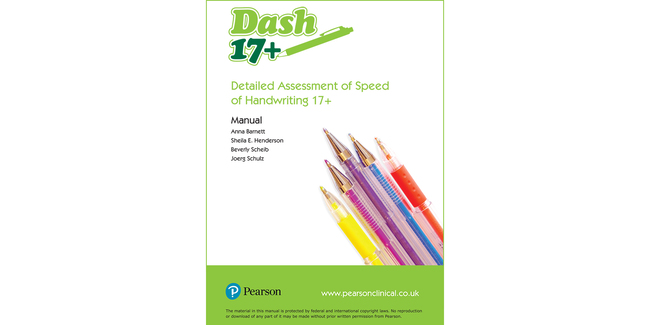The Detailed Assessment of Speed of Handwriting (DASH 17+) is a reliable, age-appropriate measure of handwriting speed for students aged 17-25 years in further and higher education.
Guidance on using this test in your telepractice.
Register for the DASH-2 Forum! Engage live with the authors, exchange tips and ideas with fellow professionals, and gain valuable insights.
DASH-2 - Now available to order!
Guidance on using this test in your telepractice.
Register for the DASH-2 Forum! Engage live with the authors, exchange tips and ideas with fellow professionals, and gain valuable insights.
DASH-2 - Now available to order!
Guidance on using this test in your telepractice.
Register for the DASH-2 Forum! Engage live with the authors, exchange tips and ideas with fellow professionals, and gain valuable insights.
DASH-2 - Now available to order!
Detailed Assessment of Speed of Handwriting
DASH 17+
The Detailed Assessment of Speed of Handwriting (DASH 17+) is a reliable, age-appropriate measure of handwriting speed for students aged 17-25 years in further and higher education.Guidance on using this test in your telepractice.
Register for the DASH-2 Forum! Engage live with the authors, exchange tips and ideas with fellow professionals, and gain valuable insights.
DASH-2 - Now available to order!
Choose from our formats
Test forms & reports
Booklets, record forms, answer sheets, report usages & subscriptions
1 option
Support materials
Manuals, stimulus books, replacement items & other materials
3 options
All products
All tests and materials offered for DASH 17+
4 options